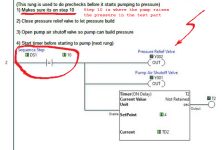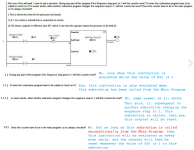@drbitboy @parky Hello I am back from the weekend. Time to get to work. I will read all the things you guys posted. It seems like you guys really want to help, I really appreciate it. I will do some more learning from what you recommend and also the codes you posted. I have skimmed through them, and it all makes sense to me so hopefully I can get something out of this week. I am planning to learn more about the electrical side of the PLC. If I don't know how everything connects then how will I know what PLC to get, so that's why I will focus on that. Also, I will give you my parts list I made already if you two want to skim over it.
NCP2-20-3120N ( pressure transducer, current to pneumatic transducer)-
https://www.automationdirect.com/ad...o_pneumatic_(i-z-p)_transducers/ncp1-20-3120n
SPT25-20-2000A (pressure transmitter)-
https://www.automationdirect.com/ad..._sensors/pressure_transmitters/spt25-20-2000a
EA9-T6CL-R (hmi touchscreen)-https://www.automationdirect.com/adc/shopping/catalog/hmi_(human_machine_interface)/c-more_touch_panels_ea9_series/c-more_ea9_series_touch_panels/ea9-t6cl-r
PARKER GRESEN Pressure Relief Valve: 0 to 2000 psi (mechanical relief valve)-https://www.grainger.com/product/38D924?gucid=N:N

S

aid:MS:CSM-2295:TVRYAD:20501231&gclid=9335421c701c1e763b3f21dc7e0b7dd5&gclsrc=3p.ds&gclid=9335421c701c1e763b3f21dc7e0b7dd5&gclsrc=3p.ds&msclkid=9335421c701c1e763b3f21dc7e0b7dd5
Solenoid Valve: 1/4 in Pipe Size - Valves, 120V AC, 0 psi Min. Op Pressure Differential-
https://www.grainger.com/product/REDHAT-Solenoid-Valve-1-4-in-Pipe-6WTT0
Click C0-12DRE-1-D-
https://www.automationdirect.com/ad...stackable_micro_brick)/plc_units/c0-12dre-1-d
Click Power Supply C0-00AC-
https://www.automationdirect.com/ad...ackable_micro_modular)/power_supplies/c0-00ac
Serial to RJ-12 cable for hmi-
https://www.automationdirect.com/ad..._panel_-a-_micro-graphic_panel_cables/ea-2cbl




